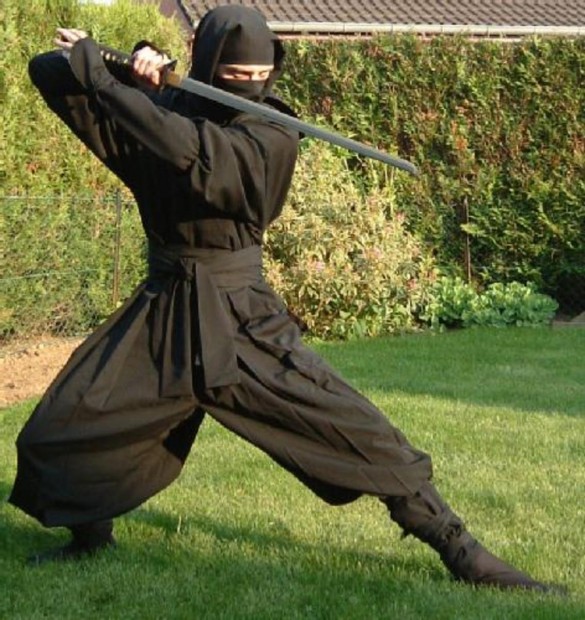
Ninjutsu, an ancient martial art and espionage system originating from Japan, holds an aura of mystery and intrigue. It is a multifaceted discipline that encompasses the art of stealth, espionage, and unarmed combat. Rooted in Japan's rich history, the enigmatic ninja warriors have captured the imagination of people worldwide.
What is Ninjutsu?
Ninjutsu, often associated with ninjas, refers to the body of knowledge and techniques that ninjas utilized for covert activities. It was developed during the feudal era of Japan and employed by clandestine agents known as "shinobi" or "ninja."
Historical Background
The origins of Ninjutsu can be traced back to the 15th century, during the tumultuous Sengoku period, where warfare and espionage played critical roles. In this era, feudal lords sought the expertise of skilled spies and assassins to gain a tactical advantage over their rivals.
2. The Origins of Ninjutsu
Early Beginnings
Ninjutsu's early roots can be found in ancient practices of guerilla warfare, stealth, and espionage. It evolved as a response to the changing landscape of feudal Japan, where conventional warfare tactics were insufficient.
Role in Feudal Japan
During the Sengoku period, Ninjutsu emerged as a specialized skill set that enabled ninjas to gather intelligence, sabotage enemy plans, and carry out assassinations discreetly.
3. The Skills of a Ninja
Stealth and Infiltration Techniques
Ninjas were masters of disguise and concealment. They honed skills such as silent movement, camouflage, and blending into their surroundings to remain unseen and unheard.
Espionage and Intelligence Gathering
Information was a valuable weapon in feudal Japan, and ninjas were adept at gathering intelligence on enemy activities, fortifications, and political plots.
Unarmed Combat and Self-Defense
In addition to espionage, ninjas were skilled in unarmed combat, allowing them to defend themselves if discovered during their covert operations.
4. Training in Ninjutsu
Secretive Training Methods
Ninjutsu training was a closely guarded secret, passed down from master to apprentice in a highly selective manner.
Physical and Mental Conditioning
Ninjas underwent rigorous physical training to develop strength, agility, and endurance. Mental conditioning was equally important, cultivating focus and resilience.
5. The Role of Ninjas in Feudal Japan
Their Purpose and Employers
Ninjas were hired by various parties, including feudal lords, samurai, and even commoners, to perform tasks ranging from intelligence gathering to political manipulation.
Notable Ninja Clans
Several ninja clans emerged throughout Japan, with each developing its unique techniques and methods. Some of the well-known clans include the Iga and Koga clans.
6. Popular Misconceptions about Ninjutsu
Hollywood vs. Reality
Pop culture has often depicted ninjas with exaggerated and unrealistic abilities, leading to misconceptions about their true historical practices.
Separating Fact from Fiction
Separating the myths and legends from the actual historical records is crucial to understanding the true nature of Ninjutsu.
7. Legacy and Modern Influence
Influence on Modern Martial Arts
Ninjutsu's legacy can be seen in various modern martial arts disciplines that incorporate stealth, deception, and unconventional tactics.
Pop Culture and Ninjutsu
Ninjas have become iconic figures in popular culture, with movies, TV shows, and video games perpetuating their mystique.
8. Ninjutsu Today
Schools and Training Centers
Despite its ancient origins, Ninjutsu continues to thrive in the modern world, with schools and training centers dedicated to preserving and teaching its traditions.
Practical Applications in Modern Times
While the era of feudal Japan has passed, some aspects of Ninjutsu remain relevant, such as self-defense, physical fitness, and strategic thinking.
9. Ethical Considerations
The Thin Line Between Honor and Deception
Ninjutsu's clandestine nature raises ethical questions about the use of deception and covert actions in pursuit of objectives.
Controversies Surrounding Ninjutsu
Throughout history, ninjas have been both revered and feared, sparking debates about their role in society.
10. The Impact of Ninjutsu on Japanese Culture
Symbolism and Cultural Significance
Ninjas have become powerful symbols in Japanese culture, representing attributes like resilience, resourcefulness, and adaptability.
Preservation and Revival Efforts
In recent times, there have been efforts to preserve and revive the traditional practices of Ninjutsu to safeguard this cultural heritage. Ninjutsu, the traditional Japanese art of stealth, espionage, and unarmed combat, is a captivating aspect of Japan's history. Rooted in secrecy and skill, the art of the ninja continues to captivate people's imagination, even in modern times. As we delve deeper into the world of Ninjutsu, we discover a legacy that extends beyond martial prowess, encompassing cultural symbolism and ethical dilemmas.
Subway India outlets drop tomatoes from menu citing THESE reasons